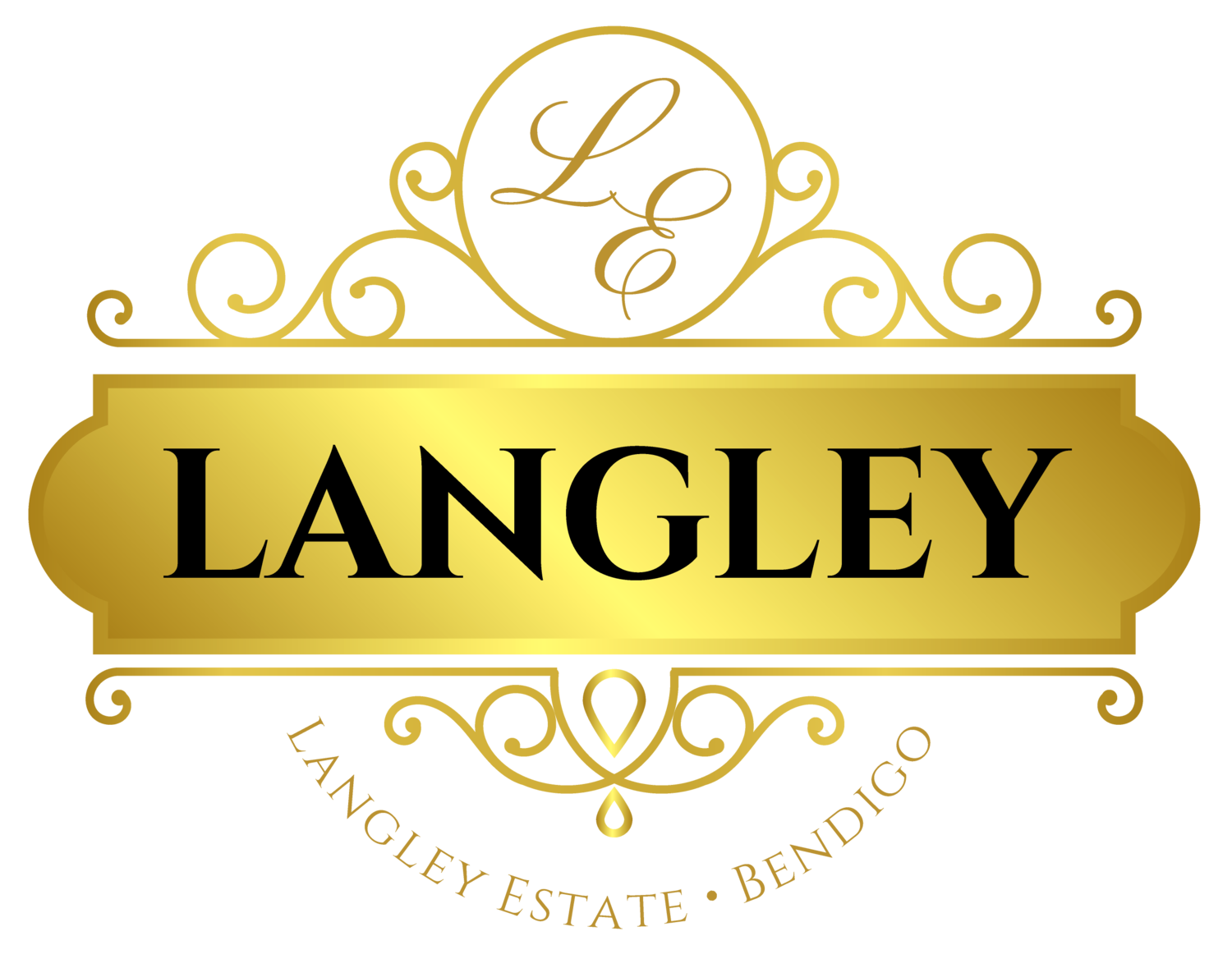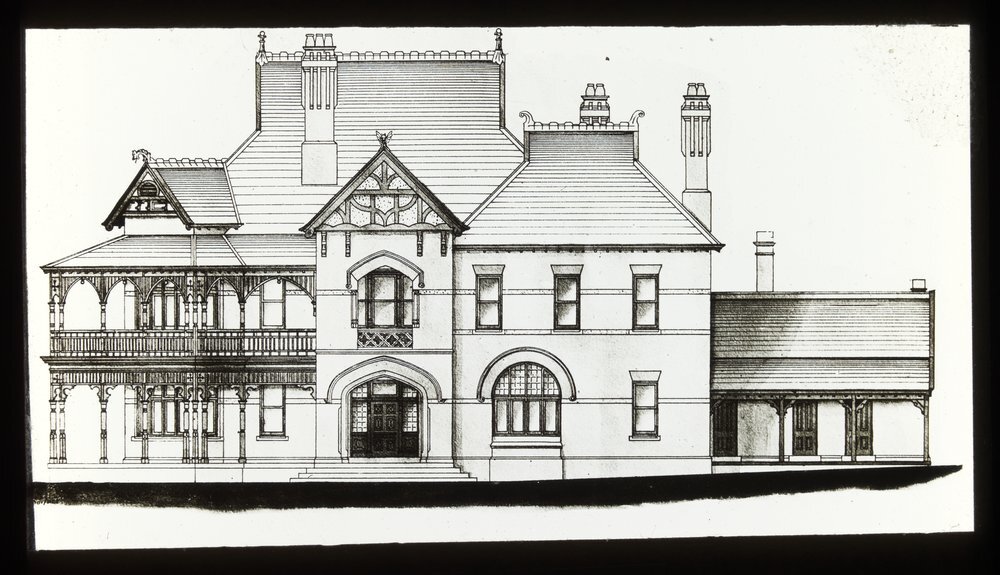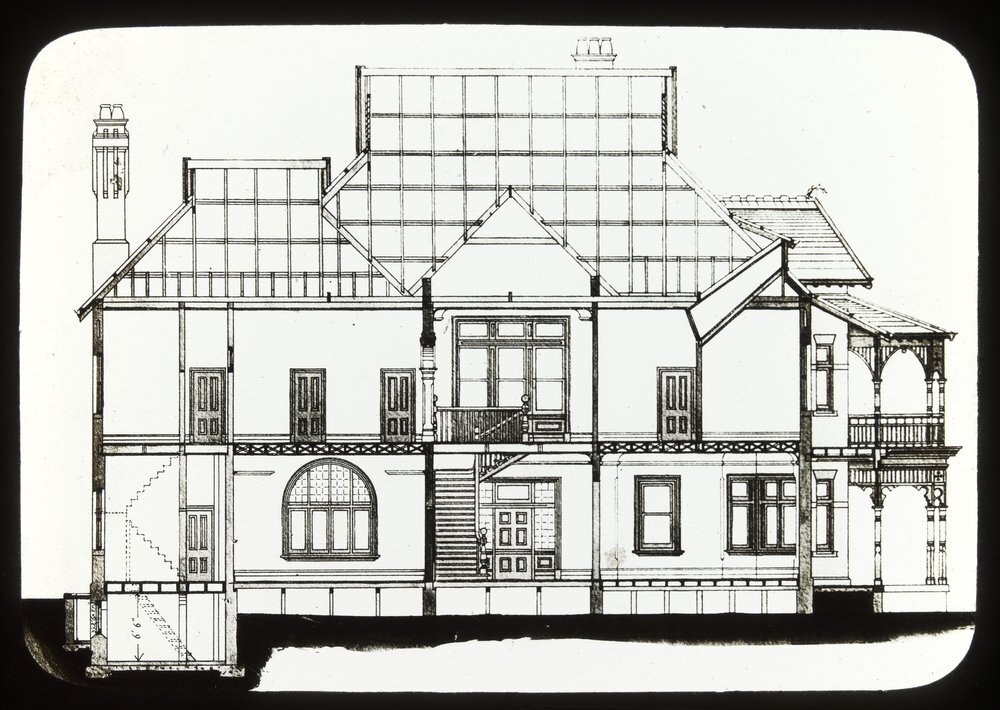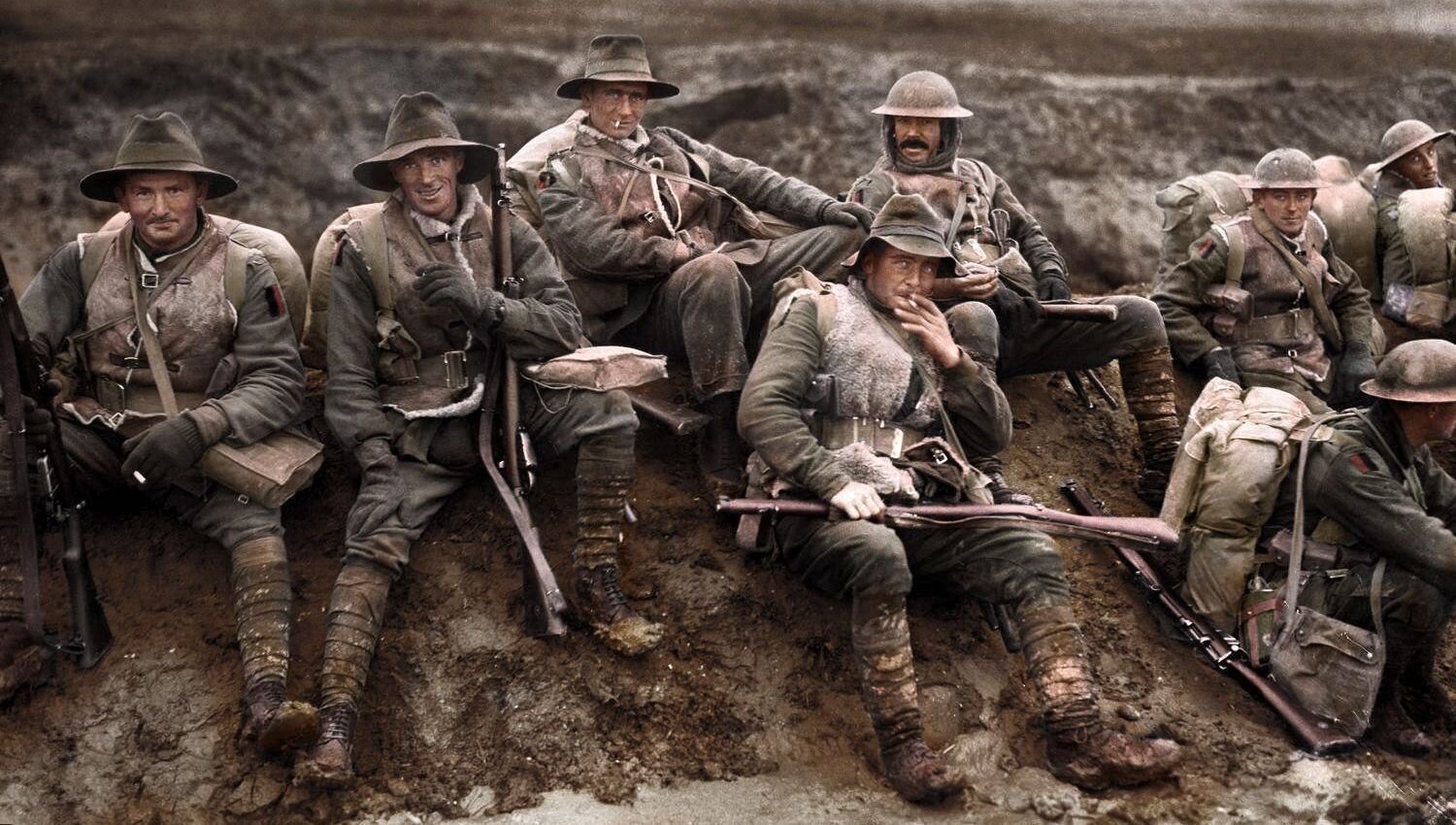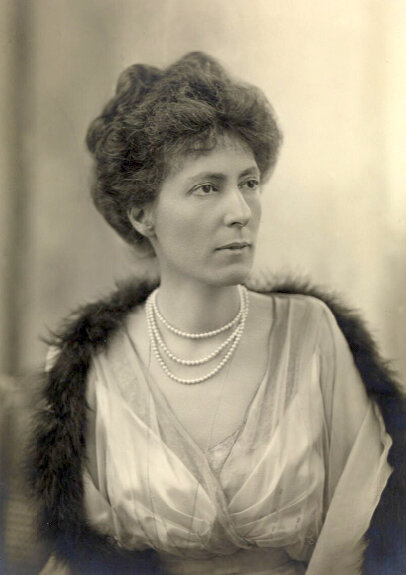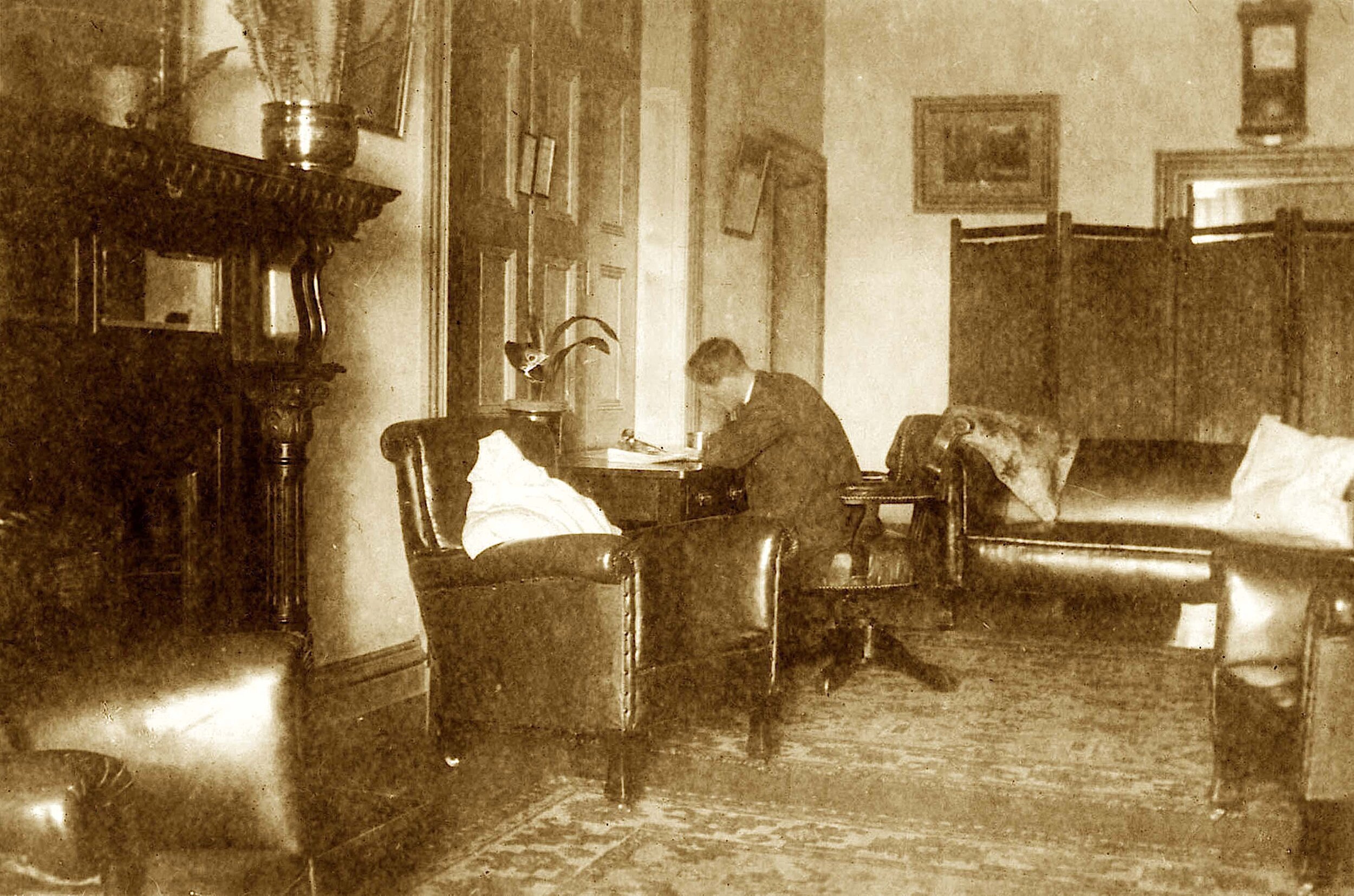History
1853 – 1903
EARLY HISTORY IN ‘THE WHITE HILLS’ OF BENDIGO
The Bendigo Creek and Bendigo Valley in 1851
Langley Estate is located in Bendigo’s inner suburb of White Hills, at the north-eastern end of the Bendigo Valley, only five minutes from Pall Mall in the centre of Bendigo.
The early history of the estate dates back to 1853, not long after gold had been first ‘officially’ discovered on Bendigo Creek in late October 1851 and the diggers then followed Bendigo Creek downstream along the Bendigo Valley to ‘the famous White Hills’ of Bendigo.
In Bendigo: a history, the author Frank Cusack writes: ‘Of great interest to the early miners were the six or seven rounded white hills, ‘unique and peculiar to Bendigo’, that glistened against the dark of the nearby range at the northern end of the valley. Masses of smooth, water-washed quartz pebbles were cemented to a conglomerate of almost blinding whiteness that was possessed of a ‘most obdurate hardness’. Many a digger had blunted his pick on them without unravelling their secret.’
‘The White Hills’ of Bendigo on 4 September 1853
In 1852, a party of Cornish miners, refusing to give up and having dug, by hand, down nearly 70 feet ‘got their reward. Suddenly, their picks sank into soft pipe-clay, white, satin-smooth and seemingly depthless. The men began tunnelling. Presently, the roof forming above them showered gold at their feet – the secret of Bendigo’s famous White Hills lay revealed.’
In the ‘wild rush’ that followed, when ‘the White Hills yielded enormously and some pretty piles were made’, a young Anglican priest, John Herbert Gregory, held the first Anglican church service at White Hills in 1853. The Hamlet of White Hills was surveyed and mapped in 1854 and, by 1863, St Luke’s Church in White Hills was opened on ‘an elevated site’ in a generously sized ‘church reserve’.
Henry Archdall Langley
Other than the St Luke’s church building itself, the large and prominent ‘church reserve’ site in White Hills remained substantially undeveloped for the remainder of the 19th century until, in 1902, the Anglican Diocese of Bendigo was established. As was customary at the time, the church needed to provide a ‘Bishop’s Palace’ or ‘Bishopscourt’ for their new Bishop, Henry Archdall Langley: an Irish-born, Australian-trained Anglican priest widely respected by people of all faiths for his charitable work and ‘straightforward views’.
In December 1902, it was suggested that White Hills be selected as the site for the new ‘Bishopscourt’ mansion as St Luke's Church in White Hills had, for four decades, ‘acres of land connected with it lying idle ... The distance is barely three miles [from the centre of Bendigo] but this is more than compensated for by a splendid road all the way, with a magnificent avenue of trees, making a suitable carriage drive to it.’ The committee, appointed by the new Anglican Diocese to be responsible for the planning of and fundraising for the Bishop’s new residence, also felt the White Hills location would ‘enable the Bishop and his family to have some degree of privacy.’
William C. Vahland
Funds were raised to build the mansion throughout 1903 and, in February 1904, it was announced that the Bishop’s Palace ‘to be erected at White Hills is to be a handsome structure ... That it will be commodious is apparent ... A large verandah is to encompass three sides of the building, which will be constructed on lines best calculated to secure coolness and comfort. The building will be equipped with all modern improvements, including hot water service, lighting etc. The lowest tender for the work is £2600 and the committee expects to be in a position to commence building about the beginning of April next. The architects are Messrs Vahland and Beebe, and their work so far does them infinite credit.’
In a twist of fate, one of the two architects of the ‘Bishopscourt’ mansion, William Charles Vahland (1828-1915) who enjoyed a reputation as ‘the premier architect of the goldfields’, had also designed St Luke’s Church, White Hills forty years earlier!
John Beebe (Photo: David Bolton)
The other architect, John Beebe (1866-1936), had been in partnership with William Vahland’s son, Henry. After Henry Vahland’s sudden death in 1902, his father William Vahland came out of retirement and was John Beebe’s partner for ten years until 1912 when John Beebe became sole proprietor of the business. John was also a Fellow of the Royal Astronomical Society; he had built a solid brick observatory in East Bendigo in the 1890s which also served as a de facto public observatory.
The Beebe family was highly regarded in Bendigo: John Beebe’s father, William (Senior), was a leading stonemason and John’s older brother, William (Junior), was an acclaimed local architect and twice Mayor of Bendigo. In another twist of fate, William Beebe served on the Bendigo Council at the same time as William Heywood, the Great-Great-Grandfather of the present owner of Langley!
The ‘Bishopscourt’ mansion was the Vahland-Beebe architectural partnership’s largest commission.
The Beebe brothers, William and John, with their wives and children in 1888. (Photo: courtesy Midge Phillips)
1904 – 1919
Bishopscourt
The earliest known photograph of the newly-completed mansion (c.1906)
Formally named ‘Bishopscourt’, the Memorial Stone for the mansion - still prominent today - was dedicated, with much ceremony in the presence of about 800 people, on 7 September 1904. However, Henry Langley and his large family only occupied their new home from mid-March 1905 until Henry’s tragic death aged 65 on 5 August 1906, barely 17 months later.
John Langley
After Henry’s untimely death, the next Anglican Bishop of Bendigo was another sibling from the same Langley family. In a coincidental succession Henry’s elder brother, John Douse Langley, served as the Anglican Bishop from 1907 until 1919 and lived in the mansion, still known as ‘Bishopscourt’, for 13 years.
After John Langley’s resignation in 1919 the next bishop, Donald Baker, relocated to a smaller Victorian-era mansion on a site closer to the historic All Saints’ Church in Forest Street; the All Saints’ building had become Bendigo’s Anglican Pro-Cathedral in 1902 after Henry Langley was enthroned as the first Bishop in the All Saints’ building.
All Saints’ Cathedral, Bendigo
Baker’s intention was to build a large new All Saints’ Cathedral on the Forest Street site to rival the magnificent Catholic Sacred Heart Cathedral; Sacred Heart Cathedral, Bendigo is Australia’s largest provincial cathedral and one of the largest and finest Gothic-revival buildings in the southern hemisphere.
Baker’s plans never came to fruition and the grand designs for a massive Anglican cathedral in Bendigo remain forever consigned to architects’ sketches on a fund-raising brochure from the early 1930s.
In 1981, St Paul’s Church in Myers Street, a larger building than the original All Saints’ Church, was finally chosen to become Bendigo’s Anglican Cathedral.
1919 – 1926
‘Diggers’ Red Cross Convalescent Home
From 1919 to 1926 the mansion, no longer occupied by the Anglican Bishops of Bendigo but still known as ‘Bishopscourt’ or ‘Old Bishopscourt’, was leased by the Australian Red Cross to provide respite care for returned Australian soldiers from World War I.
Operating as the ‘Diggers’ Red Cross Convalescent Home, Langley became a place of peace and rest for the ANZAC troops, known as ‘diggers’, suffering shell shock (now called PTSD) and other mental and physical injuries they had sustained during the atrocities of the First World War.
Whereas, in 19th-century Bendigo, the term ‘digger’ had referred to those mining, or digging, for gold, half a century later the colloquialism referred to the ANZAC troops who were told to ‘dig, dig, dig, until you are safe’ during the Gallipoli campaign. Many Bendigonians served their country in World War 1 including Jack Heywood, the Great-Great-Uncle of the present owner of Langley, who was in the group that landed the first gun at Gallipoli.
The ‘Diggers’ Convalescent Home was opened in the mansion on 3 December 1919 by Lady Helen Munro Ferguson, President and Founder of the Australian Red Cross and wife of the Governor-General of Australia.
At the opening ceremony, in the presence of over 300 people, it was reported ‘Her Excellency drew attention to the beautiful home and grounds as being an illustration of the earnest endeavours of the Red Cross towards the care of those who suffered in the big fight for freedom.’
To further assist the returned soldiers in their recovery, a new Billiard Room and Lounge were built on the grounds of the estate at the time. Over the following six years, over 800 returned servicemen were able to rest and recuperate at Langley.
1926 – 1929
‘Old Bishopscourt’ becomes ‘Langley Hall’
The mansion renamed Langley Hall, pictured c.1928
In 1926 the mansion was formally named ‘Langley Hall’, in honour of the Langley brothers who had served as the first two Anglican Bishops of Bendigo, when the building was used for three years as the home of the Bendigo Theological College in association with the Australian College of Theology, affiliated with the Anglican Church.
The 1926-1927 Year Book said the theological training college ‘was founded by Bishop Baker in temporary quarters in 1921, and has proved to be perhaps the most valuable institution within the Diocese [training young priests].’
‘In 1926 what formerly was known as the Theological Hostel was moved to Old Bishopscourt, White Hills and named Langley Hall in honour of our first two Bishops.’
1930 – 1931
Bees, Carpenters and Lauriston
After the departure of the Theological College staff and students at the end of 1929, the ‘rambling and commodious’ buildings were temporarily unoccupied - by humans at least! The future of Langley was planned over the following 18 months and on Tuesday 25 August 1931 the Synod, or Council, of the Anglican Diocese of Bendigo confirmed the momentous decision to use Langley Hall as a ‘Toddlers’ Home’; Langley would become a home for 1,500 children over the following half-century.
A ‘Toddlers’ Home’, as distinct from an Orphanage, was - as its name suggests - a home for small children who had living parents unable to keep them in their own homes. Whether the children could not be kept with their parents for social, domestic or financial reasons, the Toddlers’ Home even catered for parents who, for example, may have had three children and were not able to keep the youngest child at home between the ages of 18 months and 5 years: they could bring their youngest child to the Toddlers’ Home aged 18 months, and take them back home aged 5 years. How times have changed!
On 8 January 1932, it was reported by The Age newspaper in Melbourne that the Registrar of the Bendigo Diocese had signed a contract with the Bendigo building contractors Messrs Clough and Cotton ‘for the conversion of Langley Hall into a Toddlers’ Home.’ Two weeks later, on 21 January 1932, The Age reported that, when removing some of the old woodwork at Langley Hall, ‘carpenters discovered two complete hives of bees, which contained enough comb and honey to suggest that they had been there for a couple of seasons. The bees attacked the workmen, and were driven off with difficulty.’
The modifications were completed over the following five months and, on Sunday 29 May 1932, the papers reported ‘the first batch of children, numbering 21, has arrived for the Toddlers’ Home which has been established at White Hills and will be officially opened on Saturday 4 June 1932.’
As it was decided that an important part of the work of the Toddlers’ Home would be to educate the four and five-year-old children in a kindergarten environment, a convenient solution was found to provide a building for that purpose.
The 1873 All Saints’ Church, Lauriston - now the Lauriston Chapel
Now a beautiful rural locality, the former town of Lauriston, just west of Kyneton and roughly halfway between Melbourne and Bendigo, was a thriving gold-mining community in the mid-19th Century.
All Saints’ Anglican Church, Lauriston - a ‘very pleasing and commodious wooden structure’ was opened on Sunday 8 June 1873. The site was ‘very well chosen, on the slope of the hill which descends to the Coliban River’, and the building could contain ‘upwards of 200 persons’.
Built in the Carpenter Gothic architectural style popular in the second half of the 19th Century, All Saints’ Church, Lauriston was home to a flourishing community for nearly 60 years until, by the end of 1930, the population of the town had dropped by nearly 75% from its 1871 high point to only 146 people as the supply of gold was exhausted.
As the decision was made to close All Saints’ Church in 1931, the Anglican Bishop of Bendigo - the same Donald Baker who had decided not to live at Langley twelve years earlier, worked out what could be called a ‘win-win’ situation. The historic and much-loved Carpenter Gothic building would be deconsecrated and carefully moved from Lauriston to Langley to become the Kindergarten for the new Toddlers’ Home. Not only would the ‘bright and cheerful’ building be preserved, but the joyful sounds of children’s voices would fill the space for the next half-century.
Unfortunately, no photographic evidence has yet been found of the building on its 75-kilometre journey from Lauriston to Langley along the bumpy roads of the 1930s; it must have been quite a sight!
1932 – 1979
St Luke's Toddlers' Home, THE BAYNE WING AND LANGLEY MANOR
So it was that from 1932 to 1978 Langley Estate functioned as a ‘Toddlers’ Home’ managed by the Anglican Church. Named St Luke's Toddlers' Home in reference to the neighbouring St Luke's Anglican Church, White Hills, it was originally operated by the Anglican Mission of St James and St John. This was a much-needed facility in Victoria at the time, as over 18,000 children were then in the care of the Children’s Welfare Department. Over £2,400, a sizeable sum in the early 1930s, was spent to ‘render the mansion suitable for use as a toddlers’ home’ including the conversion of the original Langley Hall kitchen into a dormitory.
In 1980, it was remembered that ‘cots lined up in large dormitories, the sounds of laughter and crying, swarms of children trailing after nurses; these images are familiar to those who worked at or were associated with the Toddlers’ Home.’
The opening of St Luke’s Toddlers’ Home at Langley Hall on Saturday 4 June 1932
Upon opening on Saturday 4 June 1932 in the presence of 1000 people including the Premier of Victoria: Sir Stanley Argyle, the Anglican Archbishop of Melbourne: Frederick Waldegrave Head and many other dignitaries, the Langley Hall mansion was able to house 60 infants and children from 18 months to 5 years of age.
Nurse and toddler at the entrance, c.1946
A new wing, known as the ‘Bayne Wing’, had been erected for the Toddlers’ Home through the generosity of Mrs Amy Elizabeth Bayne, of Burnewang, Elmore; Burnewang is just over 40 kilometres north-east of Bendigo and is also one of Australia’s grandest country homesteads. A tablet was unveiled by Amy Bayne to open the ‘Bayne Wing’ and, on her death in 1945 at the age of 72, St Luke’s Toddlers’ Home was the chief beneficiary of her will, receiving 80% of the residue of her vast estate of over £335,000. As the only child of the well-known Bendigo miner Joseph Bell, Amy had inherited a large fortune at the age of 10 on her father’s death in 1885 and, throughout her life, was one of the Bendigo region’s greatest philanthropists. Amy Bayne had also provided the finance for furnishing the mansion a decade earlier when it was used as the ‘Diggers’ Convalescent Home.
A toddler in front of Langley Manor, c.1949
Other benefactors had also contributed a great deal to the establishment of the Toddlers’ Home. On Saturday 16 December 1933, ‘to commemorate her work in the interests of little children’, the new external covered walkways and drying room were dedicated to the memory of Mrs Sarah Anne Wolstenholme; it was noted that ‘it was largely due to Mrs Wolstenholme that the Toddlers’ Home was first established.’
On 19 December 1936, the next Premier of Victoria, Sir Albert Dunstan, laid the Foundation Stone for the new Langley Manor attached to Langley Hall. Built to house the staff of the Toddlers’ Home, Langley Manor is a large two-storey building in the complementary Tudor-revival architectural style.
Langley Manor was dedicated by the Anglican Archbishop of Melbourne on 5 June 1937 and, with spacious bedrooms and large living and dining areas, served as comfortable accommodation for the Toddlers’ Home staff for over 40 years.
Orphans near the stables c.1935
By the late 1930s, the dozens of children on the estate were divided into three groups, depending on their age, called ‘Gum Nuts’, ‘Brownies’ and ‘Pixies’.
‘Gum Nuts’ were the youngest children, aged up to two-and-a-half, and they spent their days playing and resting before bath and bedtime.
Once a child became a ‘Brownie’, they could attend a pre-kindergarten program over the next 18 months.
‘Pixies’, aged four and older, attended kindergarten in the rehomed Lauriston Chapel and were given an early education – this ‘early education’ aspect, as an addition to the ‘child care’ offered, was an important function of St Luke's.
An orphan outside the front corner of the estate, c.1958
Over the subsequent decades, St Luke’s Toddlers’ Home at Langley Hall cared for older children as well and by the mid-1970s included adolescents.
From all accounts, the Toddlers’ Home was a happy place for the children; reports spoke of the ‘competent and sympathetic staff, healthy climate and beautiful surroundings’ at the Home. It filled an important role in the society of the day.
St Luke's Toddlers' Home closed in 1979 as part of a move towards family-based care provided by St Luke's Family Care which was established that same year.
Between 1932 and 1978 around 1,500 children had been residents at St Luke’s Toddlers’ Home on Langley Estate.
Although, in the 1950s, inspectors from the Children's Welfare Department described the Langley buildings as ‘large’ and ‘old-fashioned’, and it is true that the wide opening above the Grand Staircase in the Entrance Hall had wire netting installed to prevent adventurous toddlers falling from a great height to the floor below, it is probable the institutional use of the property saved the Langley Estate from demolition and subdivision through the 1960s and 1970s: dark decades indeed for the grand architecture of the Federation era.
1980 – 1999
RESTAURANT AND ANTIQUES
Arthur Lowery in April 1992: ‘I like to think that we saved this place. I’m sure that’s true.’
After a short period in the early 1980s when the various buildings on Langley Estate were unoccupied and its future was uncertain, the property passed from the Anglican Diocese of Bendigo into private ownership and was used as a restaurant and reception centre.
Subsequently, in the mid-1980s, there was ‘a plan to build twelve motel units in front of the mansion and to gut the old building ... That would have been the end of it.’
However, Langley Estate was saved by the Lowery and Looker families and from 1988 to 1992 initial restoration work began on the Langley Hall mansion. During this period Langley Estate was used as an antique centre.
The gardens also responded ‘to the care now being paid them. A pond and fountain which had been buried for decades are now functional again, and hundreds of roses, shrubs and trees replanted.’
2000 – 2020
ACCOMMODATION AND RESTORATION
Since the turn of the 21st century, Langley Estate has operated as a wedding and conference venue and has also been used for bed and breakfast accommodation.
On purchasing the estate in 2000, Allan and Anne Broadhead undertook further restoration work and operated a successful accommodation business with ‘all the superior accoutrements one would expect in a fine boutique hotel.’
Anthony Gurry at Langley in 2020, ‘delighted with the vision of the new owners, Thomas and Simone Heywood.’ (Photo: Bendigo Advertiser)
In June 2010, Langley Estate was purchased by Anthony and Jenny Gurry who ‘instantly fell in love with Langley.’ The Gurrys immediately engaged 23 different specialist tradespeople who worked ‘tirelessly for six months to bring it back to life.’
After the restoration of Langley Estate was finally completed, Anthony and Jenny ‘threw open their doors to the people of Bendigo, attracting 900 visitors over two days.’ Later, Anthony reflected: ‘their reaction was really positive. To open a property and have that number come through was an endorsement of the purchase and work we had undertaken. There’s always been a fascination with Langley. Bendigo is blessed with magnificent old buildings, but this is one of the few of that size and scale.’
In 2018, The Australian newspaper reported: ‘After eight years as its owners, the significance of the property is not lost on the Gurrys. ‘Jenny has always taken the view that we are custodians,’ says Anthony, ‘and our job is to improve Langley and hand it on in a better condition than when we received it. She’s definitely delivered on that ethos. The property is in magnificent condition. People say you see these buildings through rose-coloured glasses because it takes so much money to bring them back up to speed, but we’ve enjoyed the process. It’s now time for someone with new enthusiasm and a different vision to take it into its next chapter.’
2020 – Present
THE FUTURE FOR A LANDMARK ESTATE
In December 2020, just over 116 years after its official opening in 1904, Langley Estate: ‘arguably Bendigo and the surrounding district’s grandest residential property and one of the city's most admired historic landmarks’ was purchased by Thomas and Simone Heywood.
The Bendigo Advertiser reported: ‘The couple are in music - Mr Heywood being an internationally renowned concert organist - and hope to make Langley a performing arts venue. The Heywoods will live at the property and continue its operations as an accommodation, conference and wedding venue, but also plan to host musical events and the like at the estate.’
‘Mr Heywood said he and his wife were committed to introducing children to the joy of music, and down the track hoped to explore the possibility of founding a music academy at Langley. ‘We want as many people as possible to come and enjoy it,’ Mr Heywood said. The pair had been searching for a place to call home and start a performing arts program, he said, and could not believe the magnificent and unique Langley Estate when they saw it.’
Mr Heywood said the previous owners, Anthony and Jenny Gurry, had ‘done the most outstanding job with the place. Really, I’m in awe’, Mr Heywood said. Mr Gurry said they were ‘absolutely delighted’ with the sale, and its new owners had a ‘great vision’ for its future. ‘I think it will be another asset to the arts and culture of Bendigo, which is just wonderful,’ Mr Gurry said.
Both Thomas and Simone Heywood have ‘always loved Bendigo and both have strong family ties to the area.’
The Sandhurst Coffee Palace in the 1890s (demolished in the 1980s)
Thomas’ Great-Great-Grandfather, William Daniel Heywood, established and was for three years President of the Bendigo Progress Association, served on the Bendigo City Council twice in the early 20th-century and, in the 1910s, even advocated for Bendigo to have a municipal sewerage system to improve sanitation in the city’s streets!
Thomas’ Great-Great-Grandmother, Eliza, had no fewer than 12 children with William and was the granddaughter of one of Victoria’s pioneer families, the Martins, who had arrived in the Port Phillip District in 1839.
William, Eliza and many of their 12 children are buried in the Bendigo Cemetery in Carpenter Street, a three-minute drive from the Sandhurst Coffee Palace in Mitchell Street they owned and managed from 1905 until the mid-1940s. The prominently-sited Victorian-era building, later named Sandhurst House, was sadly demolished in the early 1980s after many years as a hostel for Student Teachers. And in an extraordinary twist of fate, the street at the south-eastern corner of Langley Estate is named Heywood Street!
A Fav’s ad in the Bendigo Advertiser from 1932
Simone’s father’s ancestors, the O’Loughlins, came to the Bendigo goldfields from Ireland in the early 1850s; both Simone’s Grandfather and Great-Grandfather were born in Bendigo and another O’Loughlin ancestor was one of the first barristers to live in Bendigo in the mid-1850s.
On her mother’s side, Simone’s Great-Aunt was Kath Favaloro who, with her husband Gen Favaloro, were well known in Bendigo as members of the Favaloro family. The Favaloro family - the ‘Fav.’s’ - were leaders in Bendigo’s catering and hospitality industries; as advertising proclaimed in the 1930s: ‘At Fav.’s you always get the best’. Indeed, after the Governor-General of Australia Sir Isaac Isaacs had visited Langley in June 1935 to inspect the Toddlers’ Home, ‘His Excellency was present at an official dinner party tendered by His Worship the Mayor at Favaloro’s Cafe, Bendigo.’ It’s a small world…!
On first coming to Langley in December 2020, Thomas and Simone were captivated by the Langley Magic. The estate is perfect for sharing with as many people as possible. Apart from the visual beauty of the Federation-era architecture, and ‘the fact that it’s all still intact on expansive grounds’, both Thomas and Simone instantly felt, as so many have done for over a century, that Langley is a welcoming place. You don’t feel as though you’re ‘camping in a museum’, but that you are part of a living, relaxing and timeless atmosphere at Langley.
Langley Estate was designed to be lived in and enjoyed by many people: there was even a full-time woodcutter living on the estate for nearly 50 years! In addition to continuing the accommodation, weddings and conferences at the estate, Thomas and Simone present Langley as a magnificent performing arts venue. Concert rooms, including the historic 1873 Lauriston Chapel, give the Langley Magic to a wide variety of cultural events throughout the year.
From classical chamber music concerts, jazz evenings, solo song recitals, piano recitals and choral concerts to art exhibitions, open gardens and special events such as champagne, or food and wine, tastings, Langley will have something for you to enjoy as an audience member or participate in as a connoisseur!
